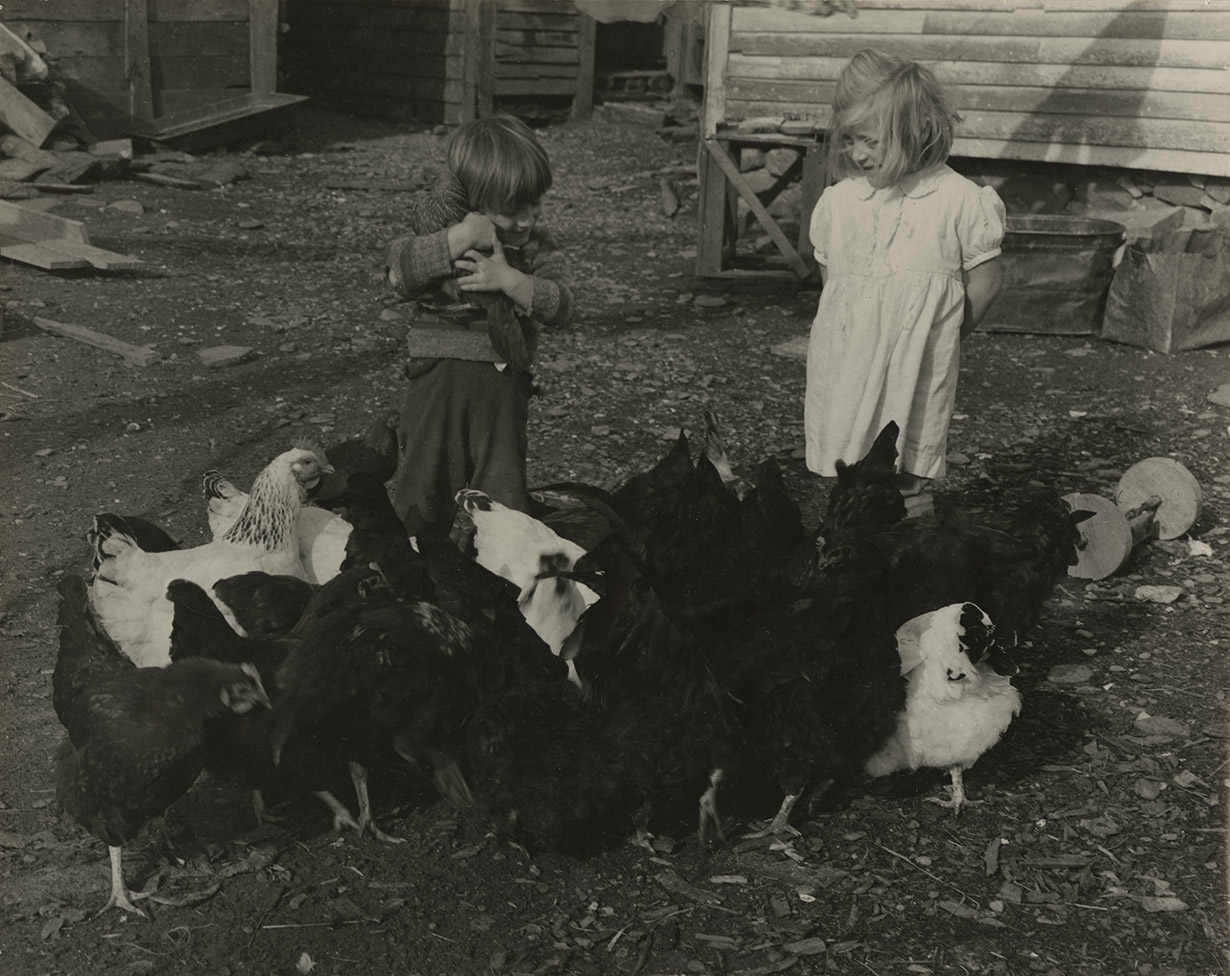Council of Nova Scotia Archives
Centre Acadien, Université Sainte-Anne
Kids playing with hens on the family farm
The Family Farm – For many years, most families in Clare practiced subsistence agriculture: self-sufficiency farming which produces enough food to feed the household. The typical subsistence farm had a range of crops and animals used by the family to feed and clothe themselves during the year, with little or no surplus for sale or trade.
A typical home farm would have a pair of oxen or a horse to prepare the fields for planting and to transport logs from the forest to be cut, split, and stored for winter heat. Haying season was always a fun time for kids because, after the hay field was mowed and raked, one could ride back to the barn on the loaded wagon and help load the hay into the barn’s lofts.
Most farms had a variety of animals, mainly for food. The cow provided milk, cream, butter, and buttermilk; children would take turns using the crank on the butter churn. Chickens provided eggs and meat for stews and rappie pie. Most farms also raised a pig, which would be slaughtered for meat. It was said that the best time to slaughter a pig was All Saints’ Day (November 1), probably because the colder weather helped preserve the meat longer. Some farms raised sheep for their wool.
Vegetable gardens did not produce the variety of vegetables we have today. Staple crops were potatoes, turnip, cabbage, peas, and string beans. Preservation was done in a root cellar, by salting in crocks, and by drying. Berries were plentiful: blueberries, blackberries, raspberries, gooseberries, and cranberries.
Featured is a photo by John Collier Jr. showing children playing in a barnyard.
Topic: Community Life
Date: [ca. 1950]
Reference: John Collier Collection Centre Acadien Photo 4
For more information, visit the Centre Acadien website.


